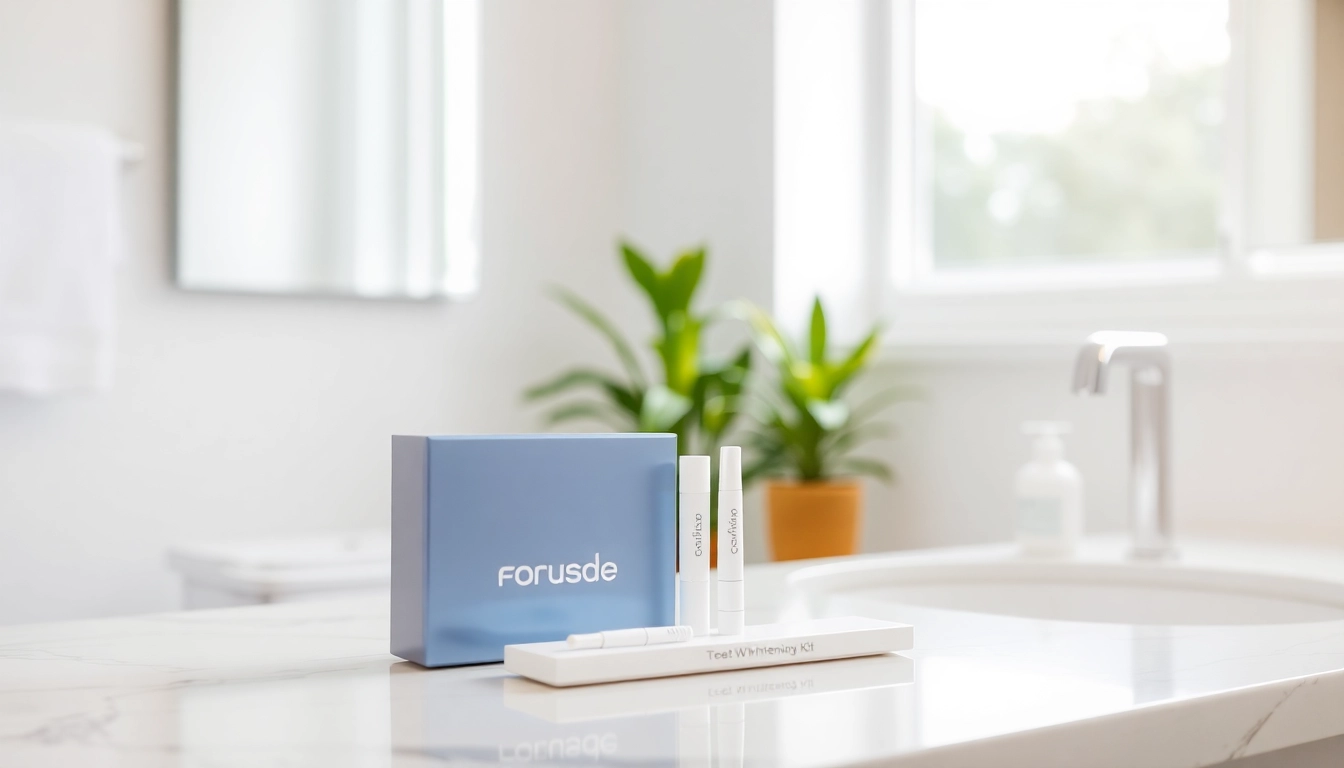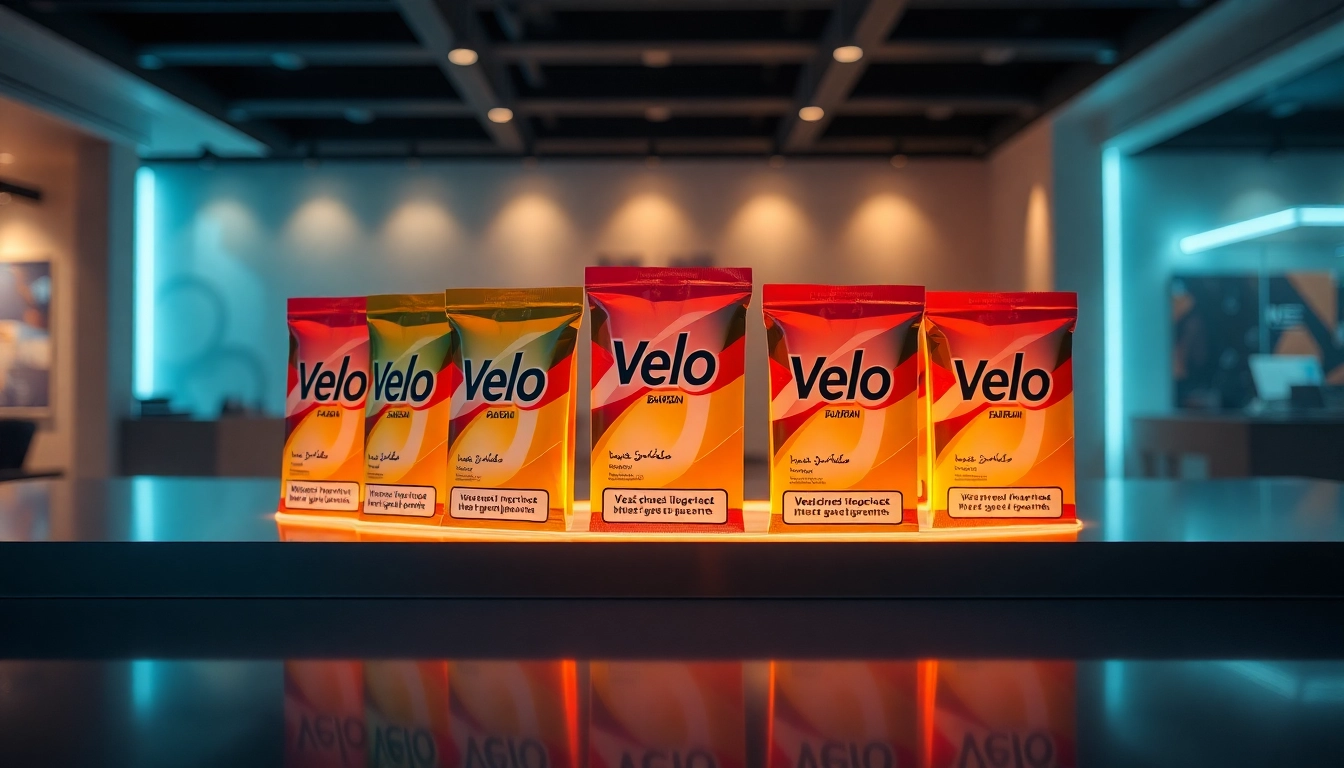Understanding Teeth Whitening Kits
In the pursuit of a radiant smile, many are turning to teeth whitening kits as an effective solution. These kits allow individuals to brighten their teeth conveniently from the comfort of their homes. But before diving into the various options available, it’s essential to understand what a teeth whitening kit truly is and the different types of products that exist in the market.
What is a Teeth Whitening Kit?
A teeth whitening kit is a collection of products designed to lighten the color of your teeth, removing stains and discoloration that can occur over time due to factors such as diet, age, and lifestyle choices. Typically, these kits contain key ingredients that help break down stain molecules, thereby restoring the natural whiteness of teeth. Most kits include a whitening agent, application tools (such as trays or strips), and often an instruction manual to guide users through the process safely and effectively.
Types of Teeth Whitening Products
Teeth whitening kits come in several forms, each offering different methods and levels of effectiveness:
- Whitening Strips: Thin, flexible plastic strips coated with a whitening gel that are applied directly to the teeth.
- Whitening Trays: Custom-fitted or ready-to-use trays filled with a whitening gel that are worn over the teeth for a prescribed period.
- Whitening Gels: Liquid formulations applied directly to the teeth using a brush applicator or an applicator pen.
- Whitening Toothpaste: Everyday toothpaste that includes mild abrasives and bleaching agents to help remove surface stains.
- LED Whitening Kits: Kits that combine traditional whitening agents with LED light to enhance the effectiveness of the treatment.
How Teeth Whitening Kits Work
The efficacy of teeth whitening kits largely depends on their active ingredients, with the most common being hydrogen peroxide or carbamide peroxide. These compounds penetrate the enamel and break down stains into smaller, less visible particles:
- Hydrogen Peroxide: This powerful bleaching agent is often found in higher concentrations and is effective for deeper stains.
- Carbamide Peroxide: Typically found in lower concentrations, this compound breaks down into hydrogen peroxide and is often gentler on sensitive teeth.
Upon application, these chemicals initiate a reaction that lightens tooth shade while ensuring a minimal risk of damage to the enamel and gums when used according to instructions.
Benefits of Using a Teeth Whitening Kit
The appeal of at-home teeth whitening kits can be attributed to several advantages, making them a popular choice for those seeking a brighter smile.
Boosting Your Confidence and Aesthetic
One of the most immediate benefits of using a teeth whitening kit is the boost in self-confidence it can provide. A bright, white smile often translates to a more youthful appearance, and many find themselves more inclined to smile freely after treatment. Studies have shown that individuals with whiter teeth are perceived as more attractive and successful, impacting personal and professional interactions.
Cost-Effectiveness Compared to Professional Treatments
While professional whitening treatments conducted by dentists yield significant results, they often come with a hefty price tag, frequently ranging in the hundreds of dollars. In contrast, teeth whitening kits are typically much more affordable. Many effective kits are available for under $100, making them an accessible option for most individuals. This cost-effectiveness allows regular users to maintain their desired whiteness without sacrificing their budget.
Convenience of At-Home Use
The convenience of teeth whitening kits cannot be overstated. Users can apply these products at home, avoiding the need for appointments or time off work. Most kits come with detailed instructions, enabling individuals to integrate whitening into their daily routines. This flexibility is particularly beneficial for busy lifestyles, allowing one to brighten their smile while multitasking, be it watching TV, reading, or commuting.
Choosing the Right Teeth Whitening Kit
With such a wide array of teeth whitening options available, selecting the right kit can be challenging. Here’s what to consider when making your choice:
Key Ingredients to Look For
When selecting a teeth whitening kit, it’s vital to look at the ingredient list carefully. Effective kits typically contain:
- Hydrogen Peroxide or Carbamide Peroxide for effective stain removal.
- Desensitizing agents like potassium nitrate or fluoride if you have sensitive teeth.
- Whitening boosters such as sodium bicarbonate to enhance the process.
Moreover, ensure that the product is ADA (American Dental Association) approved for further assurance of safety and effectiveness.
Understanding Sensitivity and Safety
Tooth sensitivity is a common concern when using whitening kits. Many users report discomfort during or after treatment, which can be minimized by opting for products designed specifically for sensitive teeth. Look for kits that feature desensitizing agents, or consider using them less frequently if you already have sensitive teeth. Always follow the manufacturer’s guidelines to avoid overuse, which can lead to adverse effects.
Reviews and Ratings: Making an Informed Choice
Before purchasing a whitening kit, take the time to read user reviews and ratings. Look for detailed testimonials that discuss both the positive experiences and any adverse effects encountered. Websites, social media platforms, and dental professional recommendations can provide insight into the effectiveness and reliability of particular products. This research will empower you to make an informed decision based on real-life usage rather than just marketing claims.
Application Tips for Effective Results
Preparing Your Teeth for Whitening
Proper preparation is vital for optimal results. Start by brushing and flossing your teeth to remove plaque and debris. This step ensures that the whitening agent can penetrate the surface of your teeth effectively. Avoid whitening directly after a dental cleaning, as your enamel may be temporarily sensitive. Additionally, ensure you choose a time when you can relax without interruptions during the application process.
Step-by-Step Kit Usage Instructions
While each kit may have its specific instructions, here is a general step-by-step guide to using a whitening kit:
- Review the instructions carefully before starting.
- Brush your teeth and allow them to dry if required.
- Prepare the whitening agent according to the kit’s instructions.
- Apply the agent, whether it’s strips, gel, or fills the tray.
- Set a timer and avoid eating or drinking during the application time.
- After the recommended time, rinse your mouth thoroughly.
Always adhere to the kit’s recommended duration. Overuse can lead to adverse effects, including increased sensitivity.
Common Mistakes to Avoid During Whitening
To maximize results and minimize side effects, keep in mind these common pitfalls:
- Using the kit too often: Stick to the recommended usage frequency to avoid enamel damage and sensitivity.
- Improper application: Ensure you apply the whitening agent evenly across all teeth for consistent results.
- Ignoring food and drink restrictions: Some kits may require you to avoid certain foods or drinks post-whitening to prevent re-staining.
- Neglecting dental hygiene: Continue proper oral care before and after using the whitening kit.
Maintaining Your Bright Smile
Once you achieve your desired whiteness, the focus shifts to maintaining that bright smile. Here are essential strategies to keep your teeth white longer:
Post-Whitening Care Tips
After whitening, it’s essential to care for your teeth properly:
- Consider waiting at least 24 hours before consuming staining foods and drinks such as red wine, coffee, or berries.
- Rinse with water after eating to remove food particles that could lead to stains.
- Use a whitening toothpaste to help maintain brightness.
Long-Term Maintenance Strategies
To ensure that your smile remains bright, implement the following long-term strategies:
- Regular dental cleanings: Visiting your dentist for routine appointments helps in plaque removal and overall oral health.
- Touch-up whitening: Depending on your lifestyle and dietary habits, consider a touch-up kit every few months or as needed.
- Healthy lifestyle choices: Avoid smoking and limit stain-causing foods to keep your smile looking fresh.
Signs You May Need a Touch-Up Kit
After your initial whitening session, you may notice that the effects start to fade. Signs that you may need a touch-up kit include:
- Visible stains or discoloration returning.
- Feeling self-conscious about your smile again.
- Changes in your diet that may lead to increased staining.
Keeping an eye out for these signs will help ensure that you maintain your ideal smile effectively.



